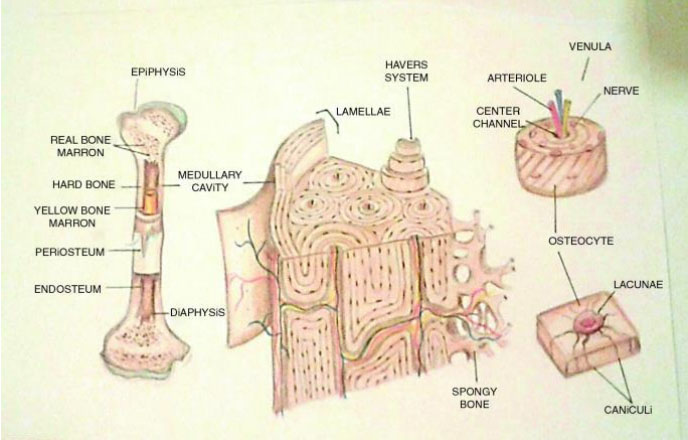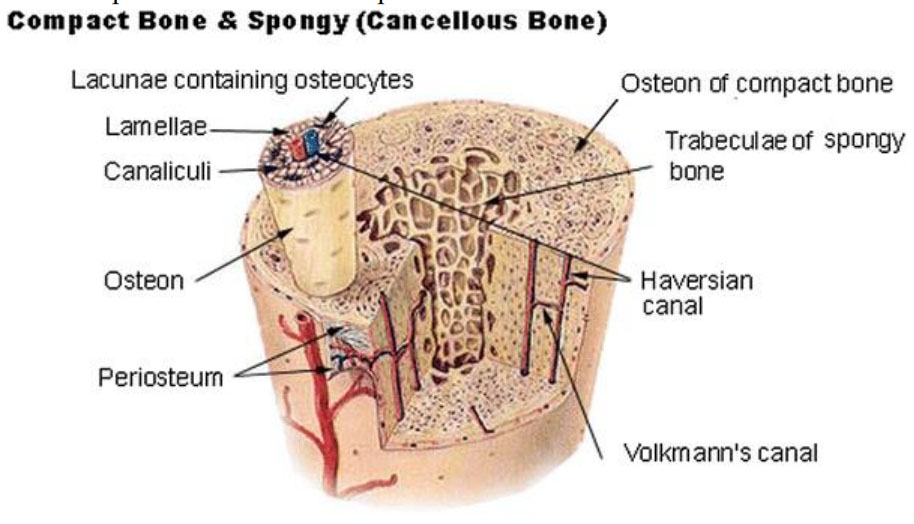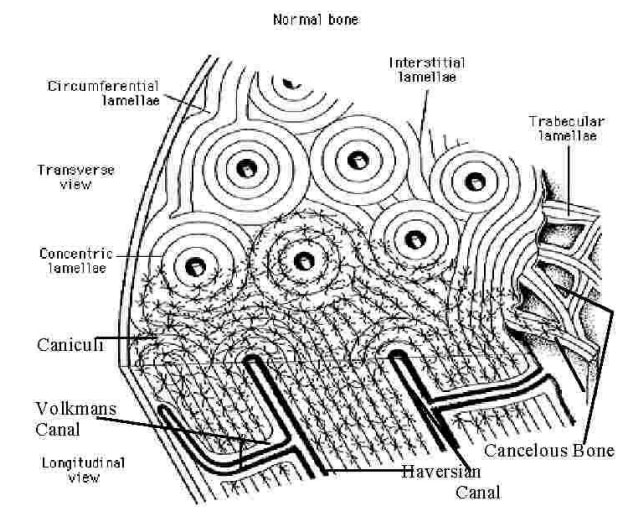- NEED HELP? CALL US NOW
- +919995411505
- [email protected]
BONE HISTOLOGY

Bone is a rigid connective tissue and functions as a mechanical support and ion reserve for metabolic functions.
- It consists of cells and matrix. Bone matrix is made up of 40% organic component and 60% of inorganic component.
- Organic constituents include type I collagen, proteoglycans, noncollagenous proteins osteocalcin,osteonectin and osteopontin.

- Inorganic contents include predominantly calcium and phosphorous in the form of calcium hydroxyapatite and osteocalcium phosphate.
- The cellular components include osteoblasts, osteoclasts and osteocytes. Osteoblasts synthesize the bone matrix and are derived from osteoprogenitor cells. Osteoclasts are bone resorbing cells which are
derived from the monocytes. - Osteocytes are inactive osteoblasts that have become trapped within the bone matrix.
- Bone is divided macroscopically into compact and trabecular types.
- Compact bone or cortical bone is thick and dense and forms the outer part of the bone proper.
- It provides mechanical support to the bone. Mature compact bone consists of lamellae that form concentric rings around larger longitudinal canals called Haversian canals.
- Haversian canals run parallel to the surface and along the long axis of the bone.

- The canals and the surrounding lamellae are called a Haversian system or an osteon.
- A Haversian canal generally contains one or two capillaries and nerve fibres.
- Haversian canals are interconnected by horizontally placed canals called Volkmann’s canals
- Trabecular bone, also known as cancellous bone or spongy bone, forms the inner part of the bone and helps in metabolism.

- They are highly vascular and contains red or yellow marrow depending on the age of the individual.
- The functional unit of cancellous bone is the trabecula.
- Trabecula are arranged as a network and are few cell layers thick.
- There are no blood vessels within the matrix of spongy bone but are well nourished from the adjacent blood vessels in the marrow spaces.

Related posts
April 10, 2025
April 9, 2025
April 4, 2025




